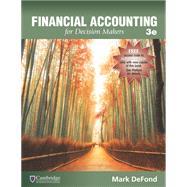Question
Paper Corp. purchased 70% of the outstanding shares of Sand Ltd. on January 1, Year 2, at a cost of $92,855. Paper has always used
Paper Corp. purchased 70% of the outstanding shares of Sand Ltd. on January 1, Year 2, at a cost of $92,855. Paper has always used the equity method to account for its investments. On January 1, Year 2, Sand had common shares of $50,000 and retained earnings of $31,250, and fair values were equal to carrying amounts for all its net assets, except inventory (fair value was $5,600 less than carrying amount) and equipment (fair value was $18,000 greater than carrying amount). The equipment, which is used for research, had an estimated remaining life of six years on January 1, Year 2.
The following are the financial statements of Paper Corp. and its subsidiary Sand Ltd. as at December 31, Year 5:
| BALANCE SHEETS | |||||||||||||||||||||||||||||||||||||||||||||||||||||||||||||||||||||||||||||||||||||||||||||||||||||||||||
| At December 31, Year 5 | |||||||||||||||||||||||||||||||||||||||||||||||||||||||||||||||||||||||||||||||||||||||||||||||||||||||||||
| Paper | Sand | ||||||||||||||||||||||||||||||||||||||||||||||||||||||||||||||||||||||||||||||||||||||||||||||||||||||||||
| Cash | $ | $ | 24,000 | ||||||||||||||||||||||||||||||||||||||||||||||||||||||||||||||||||||||||||||||||||||||||||||||||||||||||
| Accounts receivable | 46,000 | 34,100 | |||||||||||||||||||||||||||||||||||||||||||||||||||||||||||||||||||||||||||||||||||||||||||||||||||||||||
| Note receivable | 33,900 | ||||||||||||||||||||||||||||||||||||||||||||||||||||||||||||||||||||||||||||||||||||||||||||||||||||||||||
| Inventory | 88,200 | 51,000 | |||||||||||||||||||||||||||||||||||||||||||||||||||||||||||||||||||||||||||||||||||||||||||||||||||||||||
| Equipment (net) | 310,000 | 83,000 | |||||||||||||||||||||||||||||||||||||||||||||||||||||||||||||||||||||||||||||||||||||||||||||||||||||||||
| Land | 197,000 | 44,000 | |||||||||||||||||||||||||||||||||||||||||||||||||||||||||||||||||||||||||||||||||||||||||||||||||||||||||
| Investment in Sand | 138,992 | ||||||||||||||||||||||||||||||||||||||||||||||||||||||||||||||||||||||||||||||||||||||||||||||||||||||||||
| $ | 780,192 | $ | 270,000 | ||||||||||||||||||||||||||||||||||||||||||||||||||||||||||||||||||||||||||||||||||||||||||||||||||||||||
| Bank indebtedness | $ | 188,205 | $ | ||||||||||||||||||||||||||||||||||||||||||||||||||||||||||||||||||||||||||||||||||||||||||||||||||||||||
| Accounts payable | 78,000 | 65,000 | |||||||||||||||||||||||||||||||||||||||||||||||||||||||||||||||||||||||||||||||||||||||||||||||||||||||||
| Notes payable | 33,900 | ||||||||||||||||||||||||||||||||||||||||||||||||||||||||||||||||||||||||||||||||||||||||||||||||||||||||||
| Common shares | 150,000 | 50,000 | |||||||||||||||||||||||||||||||||||||||||||||||||||||||||||||||||||||||||||||||||||||||||||||||||||||||||
| Retained earnings | 330,087 | 155,000 | |||||||||||||||||||||||||||||||||||||||||||||||||||||||||||||||||||||||||||||||||||||||||||||||||||||||||
| $ | 780,192 | $ | 270,000 | ||||||||||||||||||||||||||||||||||||||||||||||||||||||||||||||||||||||||||||||||||||||||||||||||||||||||
| |||||||||||||||||||||||||||||||||||||||||||||||||||||||||||||||||||||||||||||||||||||||||||||||||||||||||||
(b) Prepare Papers consolidated income statement for the year ended December 31, Year 5, with expenses classified by function. (Round your answer to nearest whole dollar.)
(c) Calculate the following balances that would appear on Papers consolidated balance sheet as at December 31, Year 5: (Leave no cells blank - be certain to enter "0" wherever required. Omit $ sign in your response.)
(i) Inventory
Inventory $
(ii) Land
Land $
(iii) Notes payable
Notes payable $
(iv) Non-controlling interest
Non-controlling interest $
(v) Common shares
Common shares $
(d) Assume that an independent business valuator valued the non-controlling interest at $38,200 at the date of acquisition. Calculate goodwill impairment loss and profit attributable to non-controlling interest for the year ended December 31, Year 5. (Omit $ sign in your response.)
| Goodwill impairment loss | $ | |
| Profit attributable to non-controlling interest | $ | |
Step by Step Solution
There are 3 Steps involved in it
Step: 1

Get Instant Access to Expert-Tailored Solutions
See step-by-step solutions with expert insights and AI powered tools for academic success
Step: 2

Step: 3

Ace Your Homework with AI
Get the answers you need in no time with our AI-driven, step-by-step assistance
Get Started


